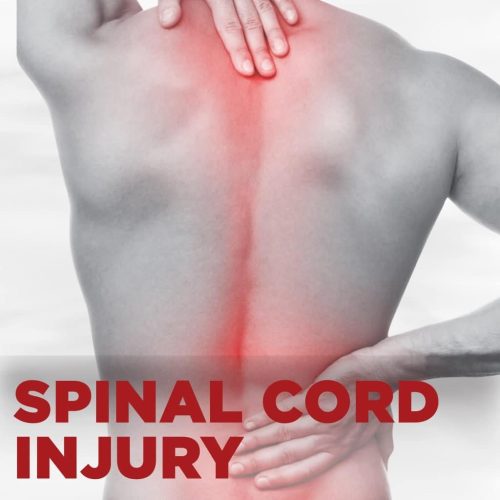Spinal Cord Injury
SPINAL CORD INJURY Impairment or LOSS of the lower limb's motor/ sensory/ autonomic function and sometimes involves the trunk.

SIGN & SYMPTOMS
- Pain or an intense stinging sensation
- Loss of movement
- Loss of sensation, including the ability to feel heat, cold and touch
- Loss of bowel or bladder control
- Exaggerated reflex activities or spasms
- Changes in sexual function, sexual sensitivity and fertility
- Difficulty breathing, coughing or clearing secretions from your lungs
Causes
- After spinal cord injury, impairment of information traveling along the spinal nerves below the level of injury, resulting in paraplegia
- The messages will be blocked by the damage in the spinal cord at the level of injury however at above the level of injury will be unaffected and continue to work as normal
6 Surprising Risk Factors for Spinal Cord Injury, Don't Ignore These!
(1) Mostly Male
Spinal cord injuries affect a disproportionate number of men.
(2) Age between 16 AND 30
More than half of spinal cord injuries occur in people in this age range.
(3) Age 65 AND OLDER
Another spike in spinal cord injuries occurs at age 65. Falls cause most injuries in older adults.
(4) Alcohol use
Alcohol use is involved in about 25 % of traumatic spinal cord injuries.
(5) Risky Behavior
Diving into too-shallow water or playing sports without wearing the proper safety gear or taking proper precautions can lead to spinal cord injuries. Motor vehicle crashes are the leading cause of spinal cord injuries for people under 65.
(6) HAVING CERTAIN DISEASES
A relatively minor injury can cause a spinal cord injury if you have another disorder that affects your joints or bones, such as osteoporosis.
Unlocking Relief: How Physio Treats Spinal Cord Injury
Physiotherapy plays a crucial role in the comprehensive rehabilitation of individuals with spinal cord injuries (SCIs). Here are some ways in which physiotherapy is beneficial for treating spinal cord injuries:
1. Improving Mobility and Functionality
Physiotherapists work on enhancing mobility through exercises and techniques tailored to the individual’s level of injury. They focus on strengthening muscles, improving joint flexibility, and promoting overall functional independence.
2. Gait Training
Gait training is a type of physical therapy, it is essential for regaining the ability to walk, stand, and move with assistive devices. Physiotherapists use specialized techniques and equipment to facilitate walking and improve coordination.
3. Pain Management
Spinal cord injuries often result in chronic pain. Physiotherapy includes pain management strategies, such as gentle exercises, stretching, and manual therapy to alleviate discomfort.
4. Respiratory and Cardiovascular Conditioning
Physiotherapists address respiratory issues that may arise due to reduced lung capacity after a spinal cord injury. Cardiovascular exercises are incorporated to maintain heart health and overall fitness.
5. Postural Training
Correcting and maintaining proper posture is vital for preventing secondary complications. Physiotherapists teach patients how to maintain good posture and body alignment.
In summary, physiotherapy for spinal cord injuries is a comprehensive and individualized approach aimed at maximizing functional independence, improving quality of life, and minimizing complications associated with immobility. The goal is to empower individuals to lead fulfilling lives despite the challenges posed by the spinal cord injury.

